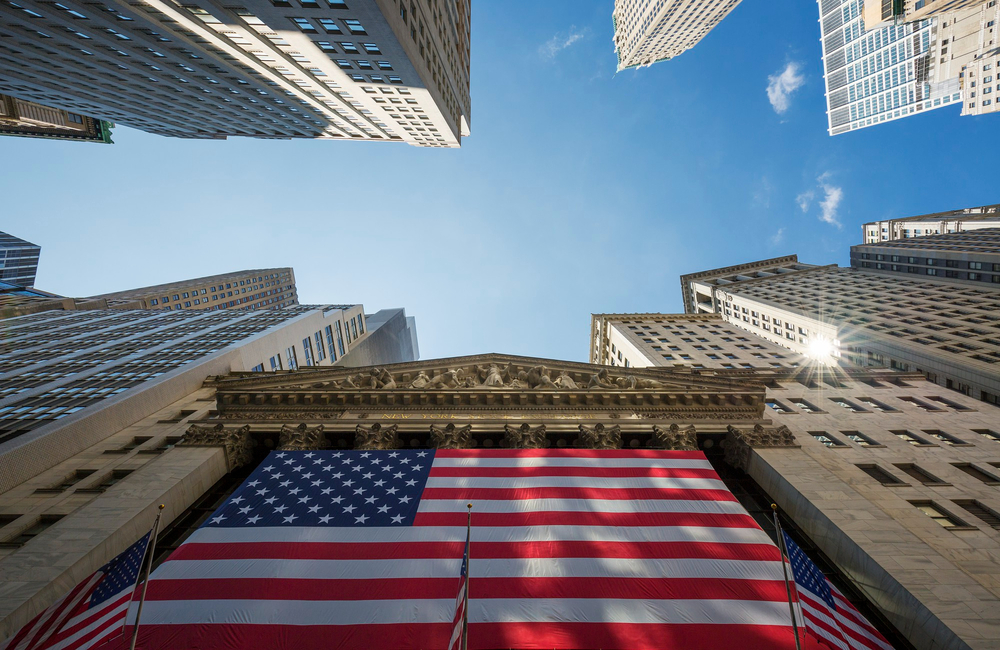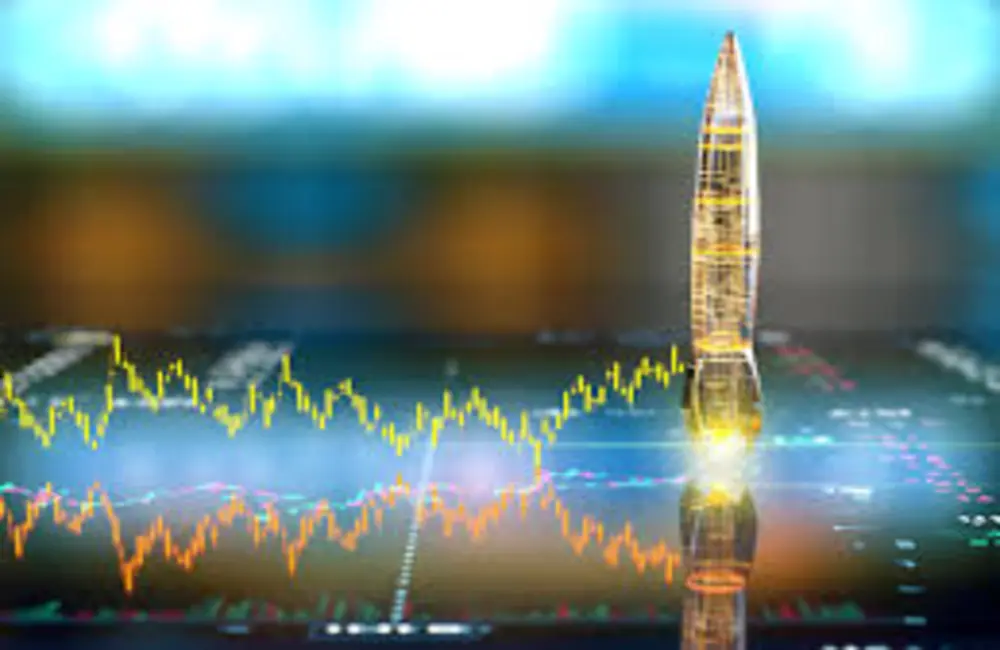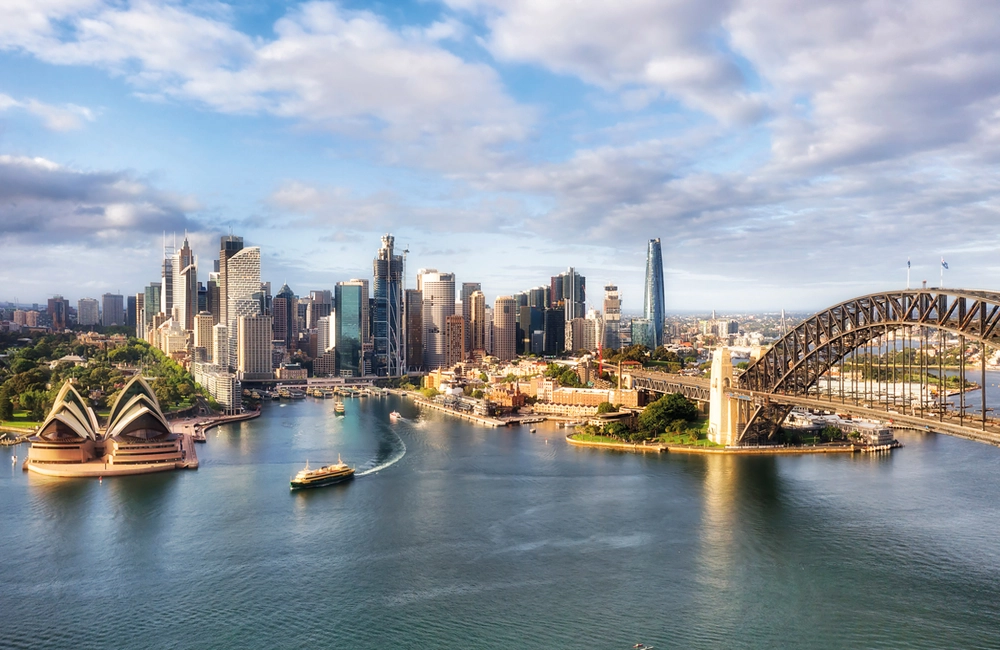ASX futures were further up, by 70 points or 1 percent, to 7163 as of 8.00 am AEST on Thursday, pointing to a firmer start to trading.
The S&P 500 gained 1.9 percent on Wednesday, a day after the benchmark index dropped 1.6 percent. The Dow Jones Industrial Average rose 596 points, or 1.8 percent, and the technology-oriented Nasdaq Composite Index gained 1.6 percent. The gains were broad-based, with most of the S&P 500’s 11 sectors up 1 percent or more.
Oil prices rose overnight as Exxon Mobil joined Shell, BP and a host of major energy consumers in severing ties with Russia’s oil and gas sector. Brent crude oil surged above US$110 for the first time since 2014 even as the US and other nations announced the release of 60 million barrels of oil from emergency supplies.
Though the war in Ukraine continued and oil prices were soaring, investors were looking at interest rates. Fed Chairman Jerome Powell, testifying before the House Committee on Financial Services, said he would recommend a quarter-percentage point rate hike at the central bank’s meeting in two weeks. That eased pressure on Wall Street that the central bank would increase rates by half a percentage point.
Locally, S&P/ASX 200 finished up 0.3% at 7116.7, reversing early losses after data showed the country's economy grew 3.4% in the December quarter. The mid-session data reinforced a rally in full motion after an early 0.8% slump in the wake of a weak lead from overseas stocks.
Local gainers were led by commodity companies, with oil prices remaining at multi-year highs and gold prices on the rise. Energy explorers Beach, Woodside and Santos gained between 4.2% and 6.2%, while gold miners rose.
Iron-ore miners BHP, Rio Tinto and Fortescue rose between 3.8% and 4.7%. Australia’s energy sector is 21% higher in 2022-to-date, compared to a 4.4% decline for the ASX 200.
Stocks in Asia mostly fell. Japan’s Nikkei 225 fell 1.7% and Hong Kong’s Hang Seng Index ended 1.8% lower. South Korea’s Kospi, by contrast, rose 0.2%.
In commodities, Gold futures fell 0.8% to $US 1928.90; however Brent crude jumped 8.5% to $US 113.89; Iron ore climbed 0.4% to US$145 a tonne.
US yields bounced for the first time in two days with 10-Year Treasury Notes climbing to 1.89% from 1.72% the previous day. In the home market, the yield on the Australian 10-year bond eased to 2.07%. Yields rise when prices fall.
As at 8.00am AEDT, the Australian dollar was at 72.98 US cents, a rise from the previous close of 72.51. The WSJ Dollar Index, which gauges the US dollar against 16 other currencies, slipped to 90.36.
Asia
Turning to Asian markets, shares in China ended lower, mirroring deep declines in other Asian equity markets on worries over the military conflict between Moscow and Ukraine as that nation resists the invasion. “Clearly, the conflict shows no sign of easing, and Russia is ramping up its attacks on Ukraine and adding to concerns of further economic disruptions and more persistent pricing pressures going forward,” IG said.
Petrochemical stocks were the biggest movers of the session, with Hengli Petrochemical closing down 8.6% and Rongsheng PetroChemical Co. tumbling 7.3%. The Shanghai Composite Index is down 0.1%, the Shenzhen Composite Index is down 0.6% and the ChiNext Price Index is off 1.8%.
In Hong Kong, the Hang Seng Index slid 0.5 percent, following loss overnight in US and European equity markets with the risk of growing Russia-Ukraine military conflict. CMF Markets say a broader risk-off sentiment was floating across the markets. Biggest losers on the HSI are Xinyi Glass down 4.8%, NetEase Hldg down 3.1% and HSBC Hldgs down 3.5%. Oil firms, on the other hand, ended up, with CNOOC Ltd. up 3.6% and PetroChina up 2.4% as crude-oil prices soared this morning. The Hang Seng TECH Index fell 0.3%.
Japanese stocks closed lower, weighed down by auto and financial stocks, as uncertainty lingered over the war in Ukraine. Bridgestone fell 6.8% and Honda Motor slid 4.5% on worries about greater costs of crude and other raw materials. Dai-ichi Life Holdings are down by 5.2% as the 10-year Japanese government bond yield declines 4.5 bps to 0.130%. Oil explorer Inpex soars 7.7%, Sumitomo Metal Mining gains 3.4%. The Nikkei Stock Average dropped 1.7%.
Europe
European stocks climbed on Wednesday as investors took encouragement from positive US economic data despite worries over the continuing Russia-Ukraine conflict. The pan-European Stoxx Europe 600 rose 0.9%
“Buyers have come back into markets Wednesday after a tough day yesterday,” says IG analyst Chris Beauchamp. “An impressive ADP [private jobs data] number and a recognition of the Ukraine issues and their importance for Fed tightening policy have helped markets to get through some headwinds.”
In London, the FTSE 100 rose 1.4 percent despite the war in Ukraine, pushed higher by oil giants like BP and Shell as the price of oil continued to trade at more than $100 a barrel on fears that sanctions would lead to a major disruption in energy supplies.
“The latest spike in crude came despite the International Energy Agency tapping first barrels from its emergency reserves -- a move that has appeared, so far, largely impotent against the disruption to supply from Russia’s invasion of Ukraine,” AJ Bell said.
Polymetal International closed up 19% the biggest mover of the day followed by UK engineering company Rolls-Royce whose shares were up 6.8% at close.
In Russia, trading in stocks and derivatives was closed for a third day this week. The Russian ruble dipped 0.7% against the greenback to 111.25 per US dollar, compared with 83 Friday.
North America
US stocks soared, and oil prices surged, as investors looked for updates from Ukraine and parsed testimony on Federal Reserve plans for interest-rate increases.
The S&P 500 gained 1.9 percent on Wednesday, a day after the benchmark index dropped 1.6 percent. The Dow Jones Industrial Average rose 596 points, or 1.8 percent, and the technology-oriented Nasdaq Composite Index climbed 1.6 percent. Gains were broad, with most of the S&P 500’s 11 sectors up 1 percent or more.
Even with the war continuing in Ukraine and oil prices soaring, investors were paying attention to interest rates. Fed Chairman Jerome Powell, testifying before the House Committee on Financial Services, said he would back a quarter-percentage point rate increase at a central bank meeting in two weeks. That eased fears on Wall Street that the central bank would raise rates by half a percentage point.
Yields on benchmark 10-year Treasury notes climbed to 1.862%, compared with 1.708% on Tuesday. Yields and bond prices move in opposite directions.
Stocks have been on the move in recent days as investors have reacted to escalations in the war that Russia has waged in Ukraine and to domestic news about the economy and inflation.
Investors are reacting to rapid developments on the battlefield, a barrage of new Western sanctions on Moscow and top companies severing ties with Russia. By driving up energy prices, the conflict has also contributed to uncertainty about the likely course of US interest-rates this year.
Wednesday’s rise was the S&P 500’s sixth move of more than 1 percent in either direction over the last seven sessions, according to Frank Cappelleri, an executive director at the brokerage Instinet. Such whipsaw moves are indicative of a fragile market, he added.
“We haven’t seen big moves like this in two years,” he said, referring to the start of the pandemic.
Since the Russian invasion, major US indexes have held relatively well, with the S&P 500 and Nasdaq Composite both rising about 1.9%. But surging oil prices have the potential to stir up further volatility across markets and shares remain on an overall downtrend that dates to last year, Mr. Cappelleri said.
And some of the market trends such as oil pulling along other assets, or interest rates rising, and then rising some more simply haven’t been around for years or even decades, he pointed out. “Very few investors have lived through a rising-rates environment,” he said.
Steadily climbing oil prices are giving central banks yet another headache as they cope with the fastest inflation rates the world has experienced in decades.
Energy markets continued their swift ascent Wednesday. US crude prices soared above $110 a barrel for the first time since 2014 after refiners stopped buying Russian oil, a major piece of global energy supplies. US crude rose as much as 112.10 a barrel and was last up 7% at 110.60.
“The knock-on effects [across markets] very much depend on how high oil prices reach,” said Craig Erlam, a senior market analyst at Oanda. “If oil price starts heading to $120, we’re going to start seeing much more conversation about the economic impact more broadly of these sanctions.”
The energy space was the best performer of the session. Exxon Mobil gained 1.7 percent, Chevron was up 3 percent and ConocoPhillips advanced 1.1 percent. Abroad, BP PLC gained 4.8% and TotalEnergies climbed 8.2%.
Energy companies will benefit from higher energy prices, while trying to disentangle themselves from Russia. Exxon announced this week that it would shut down operations at a multibillion-dollar oil and gas venture in Russia and would invest no more there. BP’s announcement on Sunday that it would divest its nearly 20 percent stake in the Russian government-controlled oil producer Rosneft followed a decision by BP’s chief executive, Bernard Looney, to step down after the invasion.
Financials were the second-best sector of the day, rising roughly 2.6% and recovering half of their losses this week. Berkshire Hathaway rose 2.2%, JPMorgan climbed 2.1%, Bank of America was up 1.6% while Wells Fargo was up 3.9%.
Shares of Nordstrom soared 38 percent as the retailer forecast stronger-than-expected earnings this year, among other corporate names. Hewlett Packard Enterprise increased its full year profit projection, sending shares up 10%.
Prices surged in other corners of the energy market linked to Russia. Prices for European natural gas soared 37%. So far, there has been little disruption in the pipeline system in Ukraine, through which about one-third of Russian gas exports to Europe flows, analysts say.
The Organization of the Petroleum Exporting Countries and its allies led by Russia on Wednesday decided to increase their combined output by another 400,000 barrels a day in April, as they had agreed to do last year. This follows an announcement from the US and other big oil-consuming countries that they would release 60 million barrels of oil from their strategic reserves.
The International Energy Agency said it aimed to send “a unified and strong message to global oil markets that there will be no shortfall in supplies as a result of Russia’s invasion of Ukraine.”
In the cryptocurrency market, bitcoin hovered around $43,662, according to CoinDesk, off 0.3%. The conflict in Ukraine has led both countries to increase their demand for cryptocurrencies, which has contributed to the rise in the price of bitcoin.

























